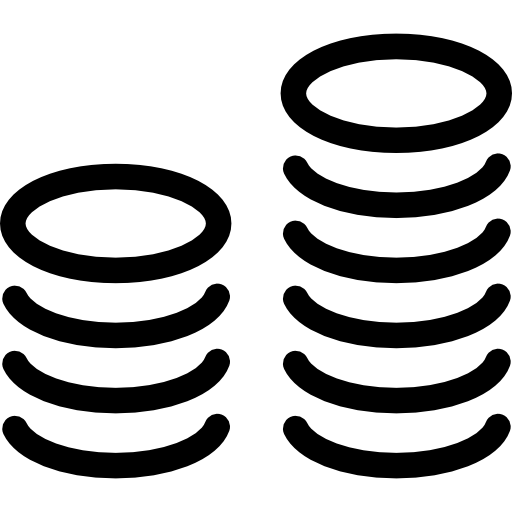
Starting date : Jan. 2017 > Jul. 2018
Lifetime: 48 months

Program in support : NMP.2013.1.2-2

Status project : complete

CEA-Leti's contact :
Fabrice Navarro

Project Coordinator: Institut Pasteur (FR)
Partners: - BE: Coris bioConcept
- DE: Forschungszen trom Borstel
- ES: GlaxoSmithKline, Nanoimmunotech, University of Zaragoza
- FR: CEA-Leti, Inserm transfert, Institut Pasteur, IRT BioAster
- GB: KU, National Institute for Biological Standards and Control, University of East Anglia
- NL: University Utrecht
- NO: Stiftelsen Sintef
- PL: National Medecine Institute

Target market: n/a

Publications:«New active formulations against M. tubercolosis:
Bedaquiline encapsulation in lipid nanoparticles and chitosan
nanocapsules», De Matteis L. et al., Chemical Engineering
Journal, 2018, 107:181-191. A. Hibbitts, A. Lucía,
I. Serrano-Sevilla, L. De Matteis, M. McArthur,
J.M. De La Fuente, J.A. Aínsa, F. Navarro, Co-delivery of free
vancomycin and transcription factor decoy-nanostructured
lipid carriers can enhance inhibition of methicillin resistant
Staphylococcus aureus (MRSA) (2019) PLoS ONE, 14 (9),
art. no. e0220684.

Investment: € 13 m.
EC Contribution: € 9.7 m.

| Stakes
- Preparing drug-loaded nanoparticles with antimicrobial activity
Within the NAREB project scope, multiple candidates (drug-loaded nanoparticles) were produced for M. tuberculosis and S. aureus. Their stability and characteristics were first investigated on each nanoparticle platform. The transcriptional response of human cells to nanoparticle treatment was also investigated. We studied the feasibility of encapsulating various antimicrobial agents countering MDR-TB or MRSA in four different delivery systems including nanostructured lipid carriers manufactured by CEA-Leti. Transcription factor decoy molecules in self-assembled bola amphiphilic-based particles (Procarta, UK) were also considered for a time only because results were contradictory. The respective particle preparation processes were optimized in relation to the required quantities and to sterility and purity. A decision tree was drawn up to accelerate and rationalize selection of relevant candidates to be considered for further in vivo testing in animal models including key criteria such as the drug payload, stability, activity and safety of tested drug-loaded particles. This process allowed us to test a large number of possible combinations (initially 289 and 258 for MDR-TB and MRSA respectively) and to identify 5 and 3 promising candidates for MDR-TB and MRSA respectively. For these candidates, the adapted formulations after spray-drying were prepared, within the project scope, for parental injection of drugloaded particles and for the quantities required for in vivo assays. The in vivo experiments involved acute and chronic assays in animal models of infectious diseases for either MDRTB or MRSA. We demonstrated that antibiotic delivery was greatly enhanced by using lipid nanoparticles in the diseased tissues (lung and blood).
However, this did not correlate with really higher efficiency in reducing the number of bacterial colonies in the infected tissues. A deeper safety assessment may be relevant to demonstrate significant improvement in the efficiency/safety balance by reducing antibiotic side effects in other organs; these experiments were not performed within the NAREB scope.
Increase in antimicrobial resistance is a global concern. The portfolio of available antimicrobial drugs for treating resistant bacterial infections is very limited and comprises molecules inducing severe side effects and/or that are difficult to administrate. New drugs or at least new formulations of known drugs that offer enhanced efficiency are urgently needed for faster, more efficient and less impairing treatment.
In this context, the NAREB project proposed nanotechnology solutions to the problem of Multi-Drug Resistant (MDR) tuberculosis (TB) and Methicillin Resistant Staphylococcus Aureus (MRSA) infections, two well-known drug resistant bacterial diseases causing major public health problems in both developed and developing countries.
NAREB brought together 16 partners from 8 EU Member and Associated States with outstanding complementary expertise, ranging from material engineering to molecular biology, pharmacology, microbiology and medicine. This association was instrumental for confirming the possibility of associating several antibiotics with nanoparticles without loss of efficiency. No superiority in the efficiency of antibiotics combined with nanocarriers was demonstrated, but no toxicity was observed at concentration used for antibiotic treatment in free antibiotics. Additional studies will be necessary to investigate the superiority of antibiotics combined with nanocarriers in relation to reducing side effects in the long term.
The most successful outcome was development of two new diagnostic systems that can rapidly detect MRSA and MDR-TB from clinical specimens with sufficient sensitivity and specificity. These products will have a major impact on society and the economy; they are expected to reach the market very soon.
The World Health Organization (WHO) has recognized antibiotic resistance as one of the three major threats to global health and is indeed predicting a forthcoming disaster due to its rapid, unchecked growth mainly because of the paucity of new classes of antibacterials being developed. Nanotherapeutics may greatly contribute this major health-related socio-economic and societal challenge by providing new approaches to combat resistant bacteria, hence improving the patient quality of life and reducing related healthcare costs. Applications of nanoformulation of antimicrobial agents may be easily extended to treat other infectious diseases.
NAREB was a pioneering project involving application of nanomedicine in the field of infectious diseases. The chemical structure of the available antibiotics implies that these drugs’ doses need to be high (mg range) to make them really efficient. The principle of delivering using synthetic nanoparticles has been demonstrated and validated in animal models. However, this concept could be more relevant when applied to antimicrobial agents with better activity, such as biomacromolecules (peptides, proteins or nucleic acids). The lessons learned from NAREB were very helpful in improving nanomedicinal product manufacturing and targeting therapeutic applications.
|
|